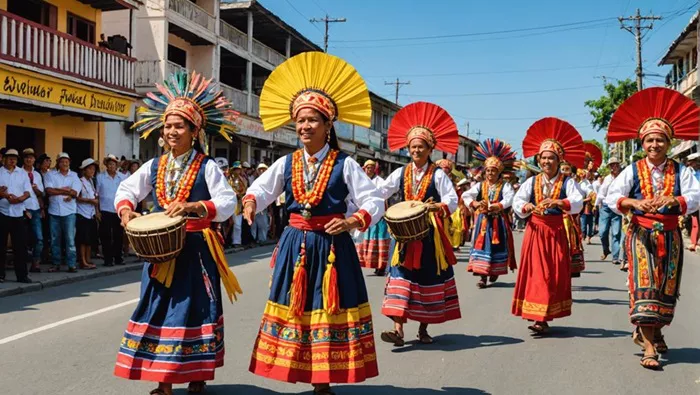The Ilocano people, native to the Ilocos Region in the northern part of the Philippines, have a rich musical heritage. Their folk songs reflect their culture, traditions, and everyday lives. These songs tell stories of love, labor, nature, and history. This article explores the essence of Ilocano folk songs, their significance, and their impact on the Ilocano identity.
The Roots of Ilocano Folk Music
Historical Background
Ilocano folk music has deep roots in the history of the Ilocano people. The songs date back centuries, influenced by indigenous traditions and Spanish colonialism. The Spanish introduced new musical instruments and forms, which blended with the local styles. This fusion created a unique sound that characterizes Ilocano folk music today.
Characteristics of Ilocano Folk Songs
Ilocano folk songs are generally simple in structure. They often feature repetitive melodies, making them easy to sing along. The lyrics are straightforward and often revolve around daily life, such as farming, fishing, and celebrations.
The songs also utilize various themes, including:
Love: Many folk songs express romantic feelings or the pains of unrequited love. These songs often feature poetic language and metaphor.
Work: Songs related to labor reflect the agricultural lifestyle of the Ilocanos. They highlight the struggles and rewards of farming and fishing.
Nature: Many songs celebrate the beauty of the natural surroundings, including mountains, rivers, and fields. Nature serves as a backdrop for many stories told through music.
Tradition and Ritual: Some songs are performed during festivals, weddings, and religious ceremonies. They often reflect the Ilocano’s strong connection to their cultural heritage.
Instruments Used in Ilocano Folk Music
Ilocano folk songs are typically accompanied by traditional instruments. These instruments add depth and character to the music. Commonly used instruments include:
Bandurria: A string instrument similar to a mandolin. It has a bright sound and is often used in ensembles.
Guitar: The guitar is popular for both solo and group performances. It provides rhythm and harmony to folk songs.
Bamboo Instruments: Various bamboo instruments, such as the bamboo flute and bamboo percussion, are commonly used in Ilocano music. These instruments create unique sounds that connect to the environment.
Drums: Drumming is vital in many folk performances, adding rhythm and energy.
See Also: Who Is the Most Famous Singer in the Philippines?
The Significance of Ilocano Folk Songs
Cultural Identity
Ilocano folk songs play a crucial role in preserving the Ilocano cultural identity. They serve as a medium for passing down stories and traditions from one generation to the next. Through these songs, younger generations learn about their heritage, values, and history.
Community Bonding
Folk songs foster a sense of community among the Ilocano people. They are often performed at gatherings, festivals, and family celebrations. Singing together strengthens bonds and creates a shared experience. This communal aspect of music is vital for maintaining the culture.
Reflection of Social Issues
Ilocano folk songs often reflect social and political issues. They can be a form of protest or a way to voice concerns about the community’s struggles. Through music, Ilocanos express their hopes and aspirations for a better future.
Popular Ilocano Folk Songs
1. “Pamulinawen”
“Pamulinawen” is one of the most famous Ilocano folk songs. It tells the story of a man expressing his love for a woman named Pamulinawen. The song features beautiful imagery and metaphors, making it a favorite for many.
The melody is catchy and easy to remember. It has become a staple in local celebrations and is often performed during festivals.
2. “Manang Biday”
“Manang Biday” is another well-loved folk song. It narrates the story of a beautiful maiden named Biday. The lyrics celebrate her charm and grace. This song is often sung in a playful manner, making it popular among children and adults alike.
3. “Ti Ayat Ti Maysa Nga Ubing”
This song speaks of the love and innocence of a child. It reflects the nurturing nature of Ilocano families and the values they instill in their children. The simple and heartfelt lyrics resonate with many, making it a cherished song.
4. “Nagsapa a Dait”
“Nagsapa a Dait” focuses on the daily life of farmers. The lyrics describe the hard work and dedication involved in farming. This song serves as a reminder of the importance of agriculture in Ilocano culture.
The Role of Folk Songs in Modern Ilocano Society
Revival and Preservation
In recent years, there has been a renewed interest in preserving Ilocano folk songs. Cultural organizations and schools are working to teach younger generations about these songs. Efforts include workshops, performances, and recording projects.
The use of social media has also played a role in promoting Ilocano folk music. Young musicians are sharing their renditions of traditional songs online, reaching a broader audience.
Integration with Contemporary Music
Many contemporary Ilocano artists are blending traditional folk elements with modern music styles. This fusion creates a fresh sound while honoring the roots of Ilocano culture.
Artists use folk melodies and themes in pop, rock, and hip-hop music, appealing to younger audiences. This integration ensures that Ilocano folk songs remain relevant in today’s music scene.
Educational Importance of Ilocano Folk Songs
Teaching Tools
Ilocano folk songs are valuable educational tools. They can be used to teach language, history, and cultural values. Teachers can incorporate these songs into their lessons to engage students and make learning more enjoyable.
Language Preservation
Many folk songs are sung in the Ilocano language. This helps preserve the language and encourages its use among younger generations. As they learn the songs, they also become familiar with Ilocano vocabulary and grammar.
Conclusion
Ilocano folk songs are more than just music; they are a vital part of the Ilocano culture. They reflect the community’s history, values, and identity. Through love stories, daily life, and social issues, these songs capture the essence of being Ilocano.
Related Topics:
What Instruments Are Primarily Used in Pop Music?

